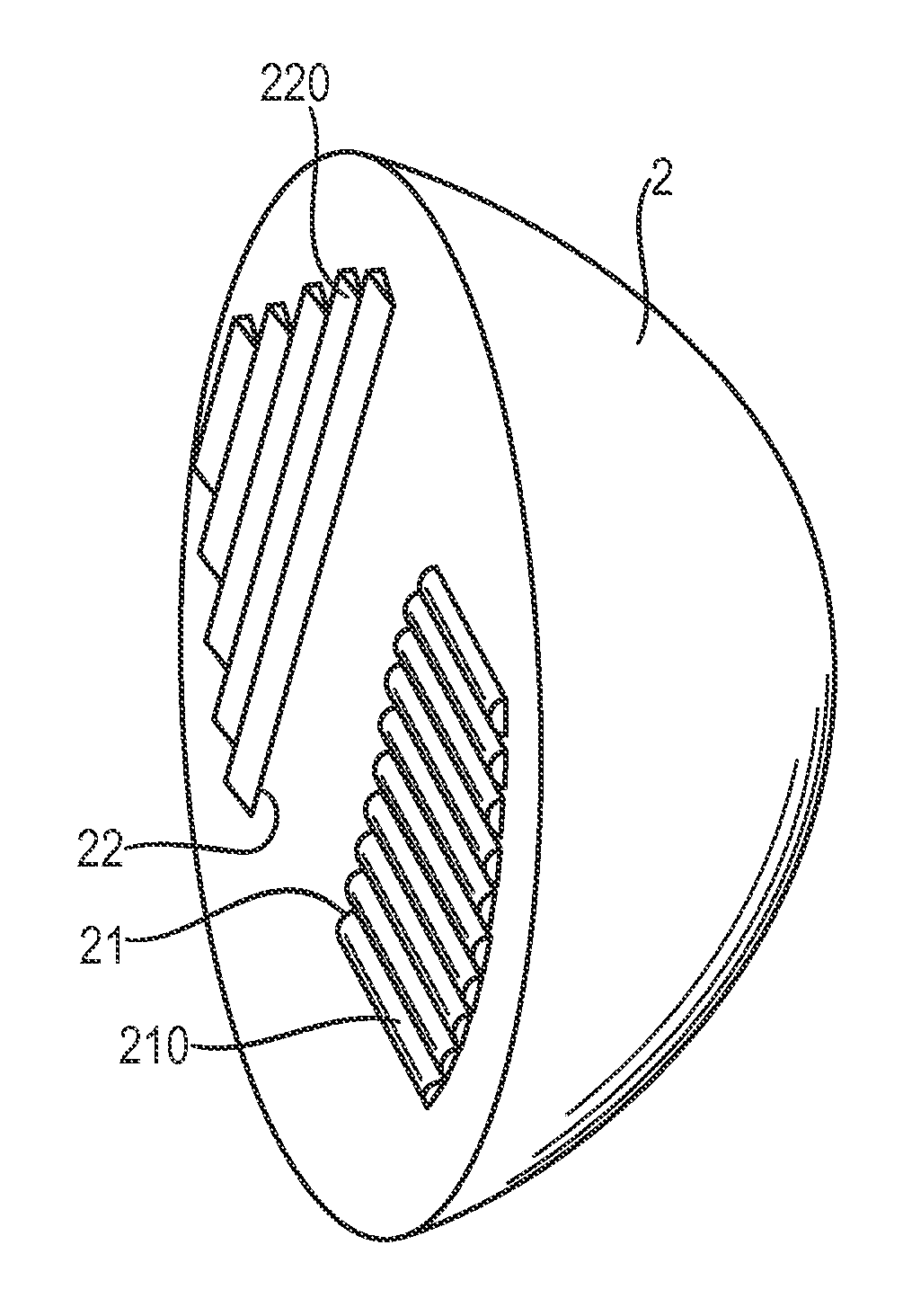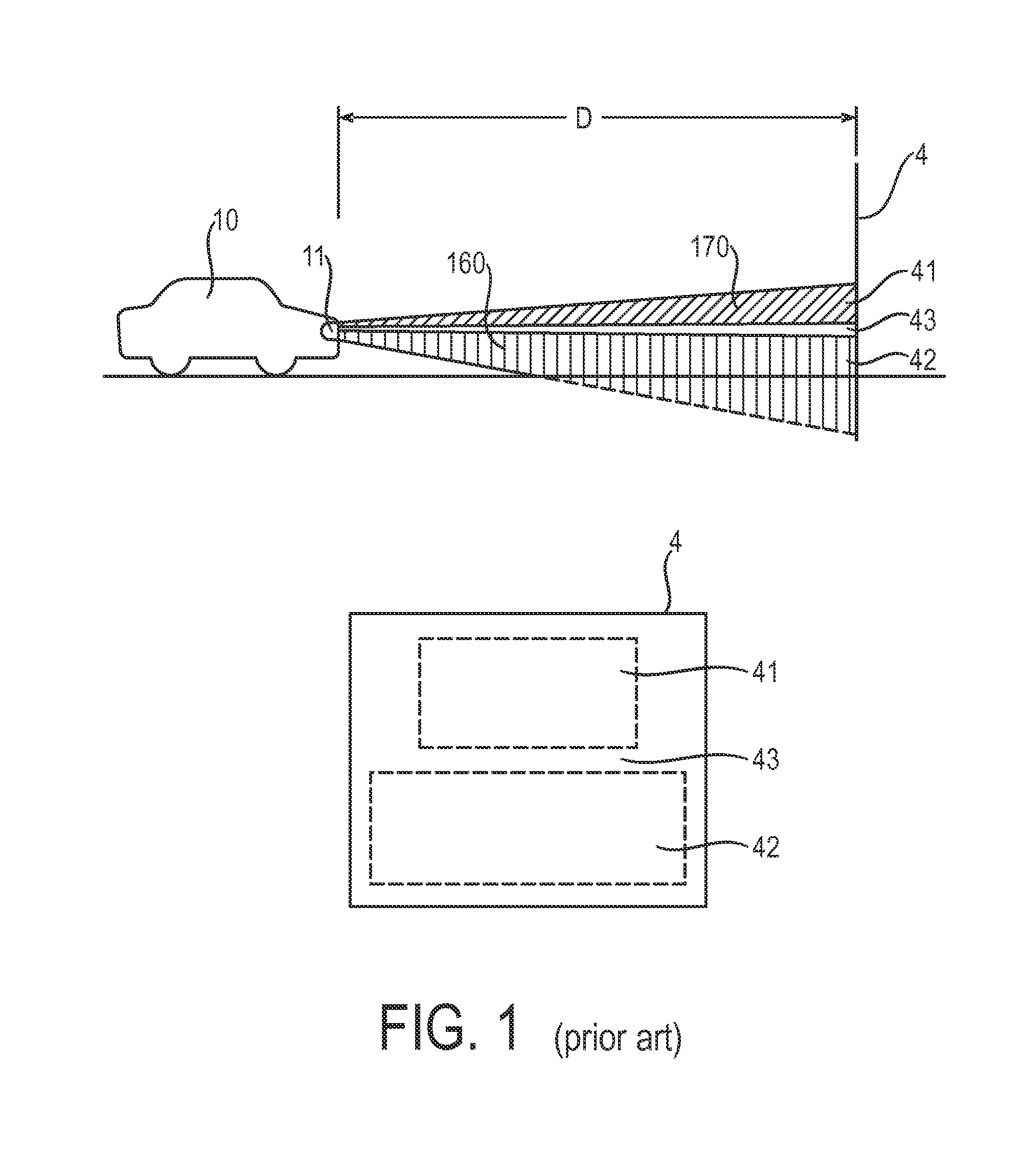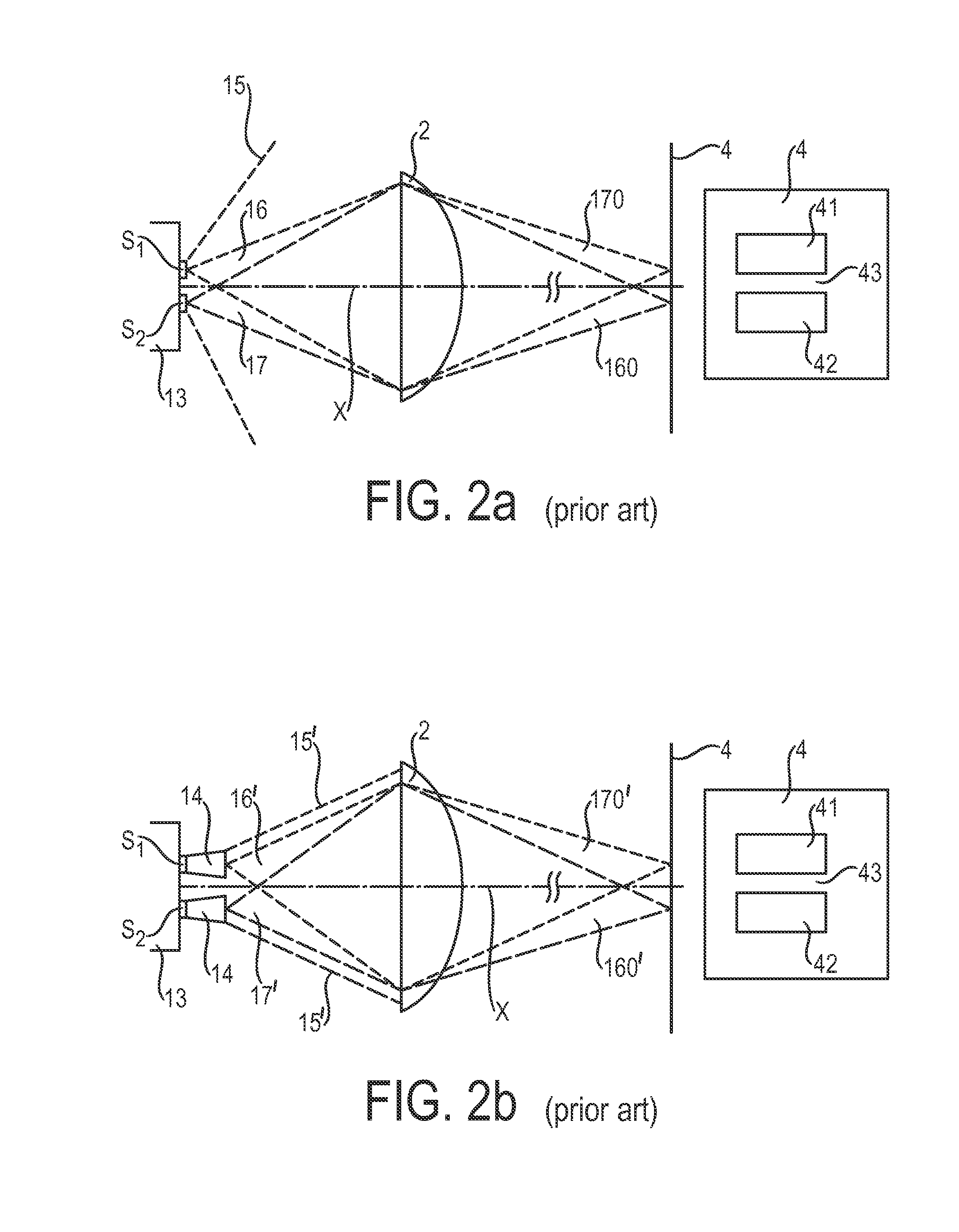Integral lighting assembly
a technology of integrated lighting and assembly, which is applied in the direction of refractors, light and heating equipment, transportation and packaging, etc., can solve the problems of safety hazards, visual gap in beam distribution, and unsatisfactory known solutions, and achieve favorable directional partial separation of beams, optimal partial beam separation, and compact
- Summary
- Abstract
- Description
- Claims
- Application Information
AI Technical Summary
Benefits of technology
Problems solved by technology
Method used
Image
Examples
first embodiment
[0040]FIG. 3 is a schematic representation of an integral lighting arrangement 1A according to the invention. Here, a pair of collimators C1, C2 each enclosing a light source S1, S2 is arranged behind an optical arrangement 2, in this case a projection lens 2, so that the light exit openings of the collimators C1, C2 are situated close to and behind the focal plane FP of the lens 2. Furthermore, the collimators C1, C2 are arranged so that each collimator directs its beam of light essentially at a part of the lens 2 on the opposite side of the optical axis X as the collimator. The term ‘optical axis’ is to be understood as an imaginary line defining the path of light propagation through the lens. In the case of an essentially symmetrical lens as shown here, the optical axis may be an axis of rotational symmetry of the lens. As the diagram shows, the first collimator C1 (above the optical axis X) directs its beam of light L1 at the lower part of the lens 2 (below the optical axis X), ...
second embodiment
[0041]FIG. 4 is a schematic representation of an integral lighting arrangement 1B according to the invention. This realization is a further development of the realization of FIG. 3 described above. Here, the light beams L1, L2 exiting the collimators C1, C2 are first refracted by prism elements 6 mounted at the light exit openings of the collimators C1, C2, resulting in a larger focal plane overlap area LFP on the focal plane FP. This results in a better, larger overlap region 44 on the virtual screen 4, as indicated by the thicker black line.
third embodiment
[0042]FIG. 5 is a schematic representation of an integral lighting arrangement 1C according to the invention. The principle of operation is different in this realization compared to the previous two embodiments. Here, a pair of collimators C1, C2 each enclosing a light source S1, S2 is arranged behind a projection lens 2, but the collimators are arranged so that each collimator directs its beam of light essentially at a part of the lens 2 on the same side of the optical axis X as the collimator. A first beam L1 is generated by the light source S1 in the first collimator C1, and is directed largely at the top half of the lens above the optical axis X. A second beam L2 is generated by the light source S2 in the second collimator C2, and is directed largely at the bottom half of the lens below the optical axis X. The conical light cones L1, L2 emitted by the collimators C1, C2 can be obtained, for example, by using collimators C1, C2 with an essentially parabolic shape. The collimators...
PUM
 Login to View More
Login to View More Abstract
Description
Claims
Application Information
 Login to View More
Login to View More - R&D
- Intellectual Property
- Life Sciences
- Materials
- Tech Scout
- Unparalleled Data Quality
- Higher Quality Content
- 60% Fewer Hallucinations
Browse by: Latest US Patents, China's latest patents, Technical Efficacy Thesaurus, Application Domain, Technology Topic, Popular Technical Reports.
© 2025 PatSnap. All rights reserved.Legal|Privacy policy|Modern Slavery Act Transparency Statement|Sitemap|About US| Contact US: help@patsnap.com



